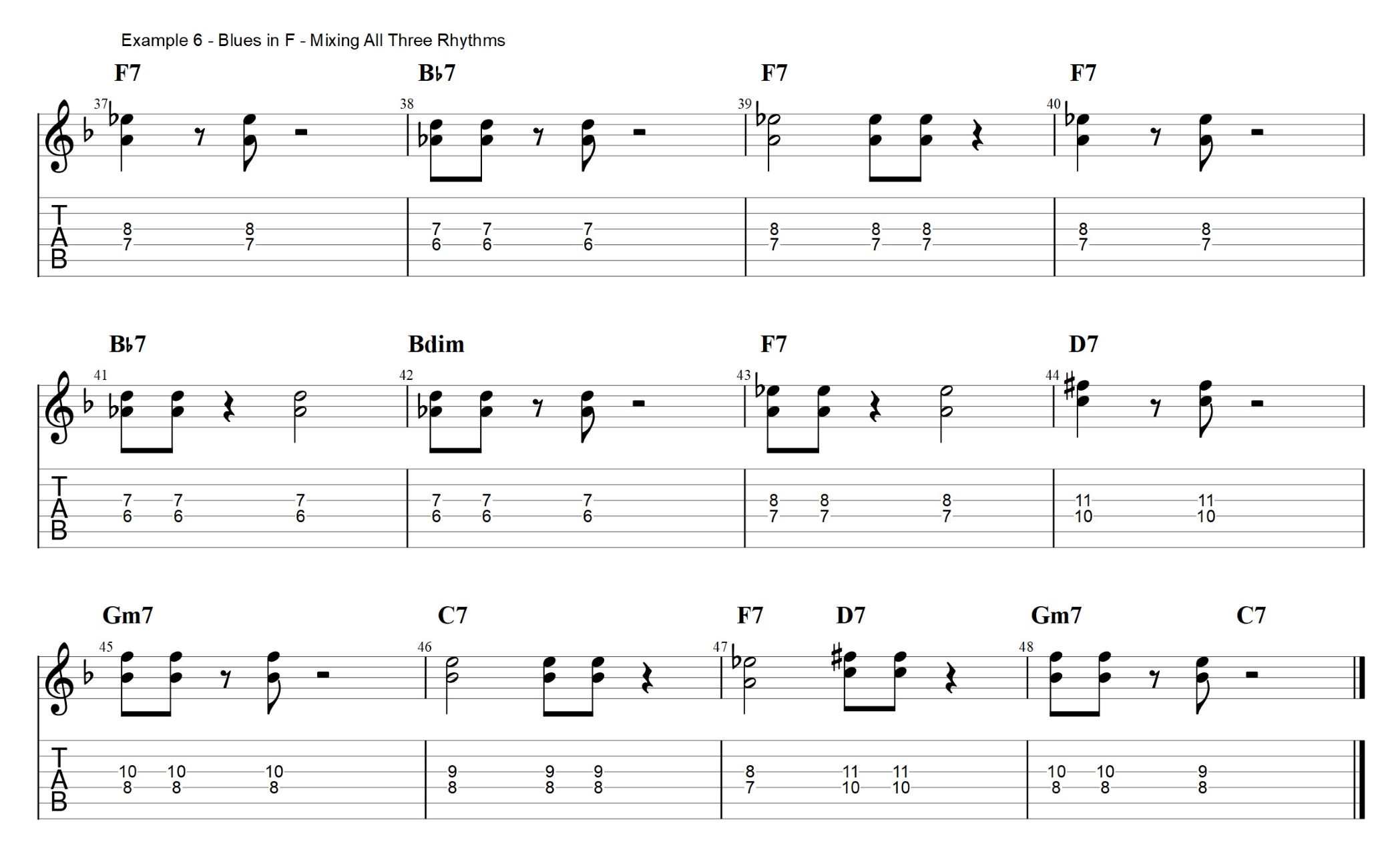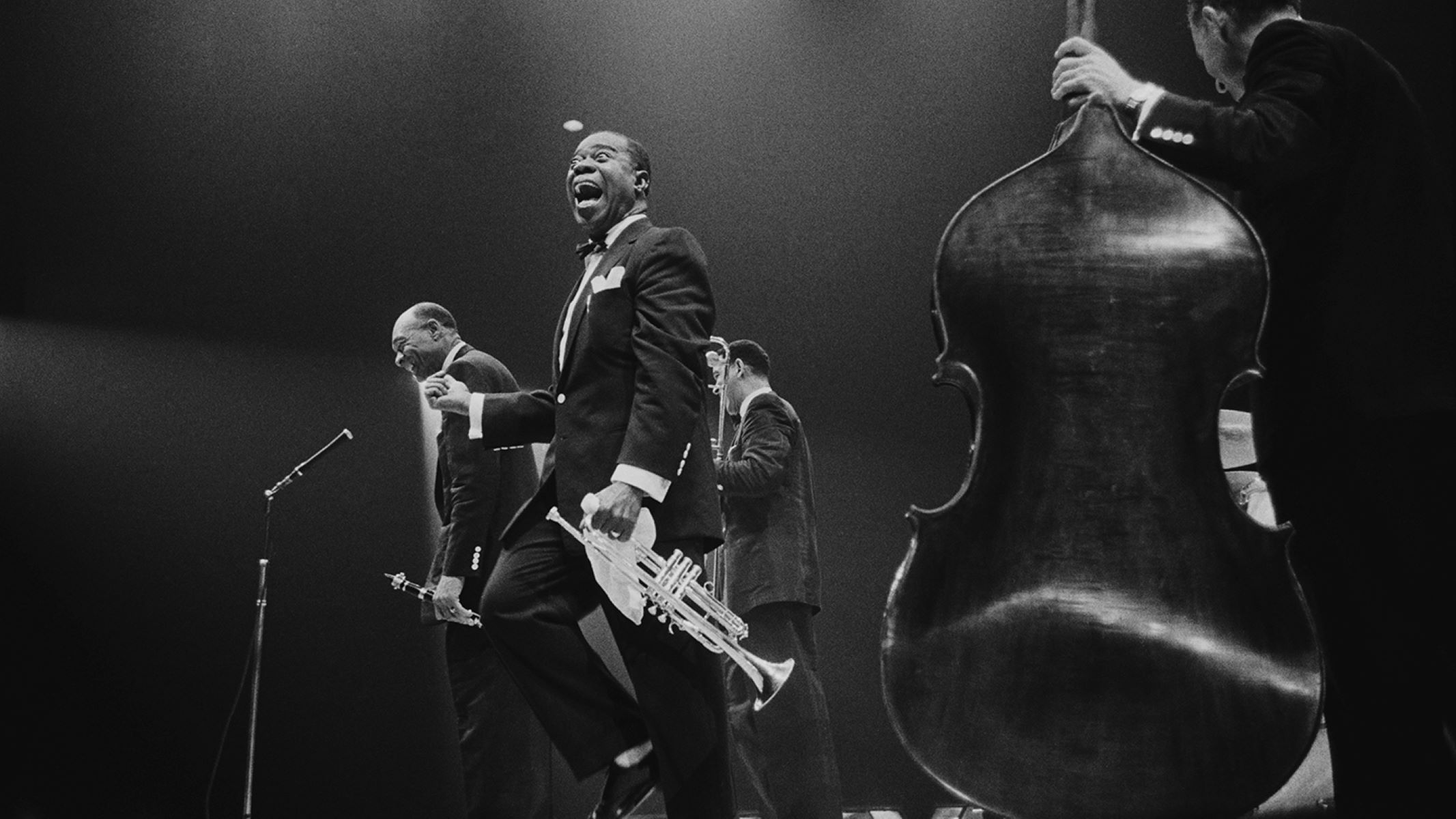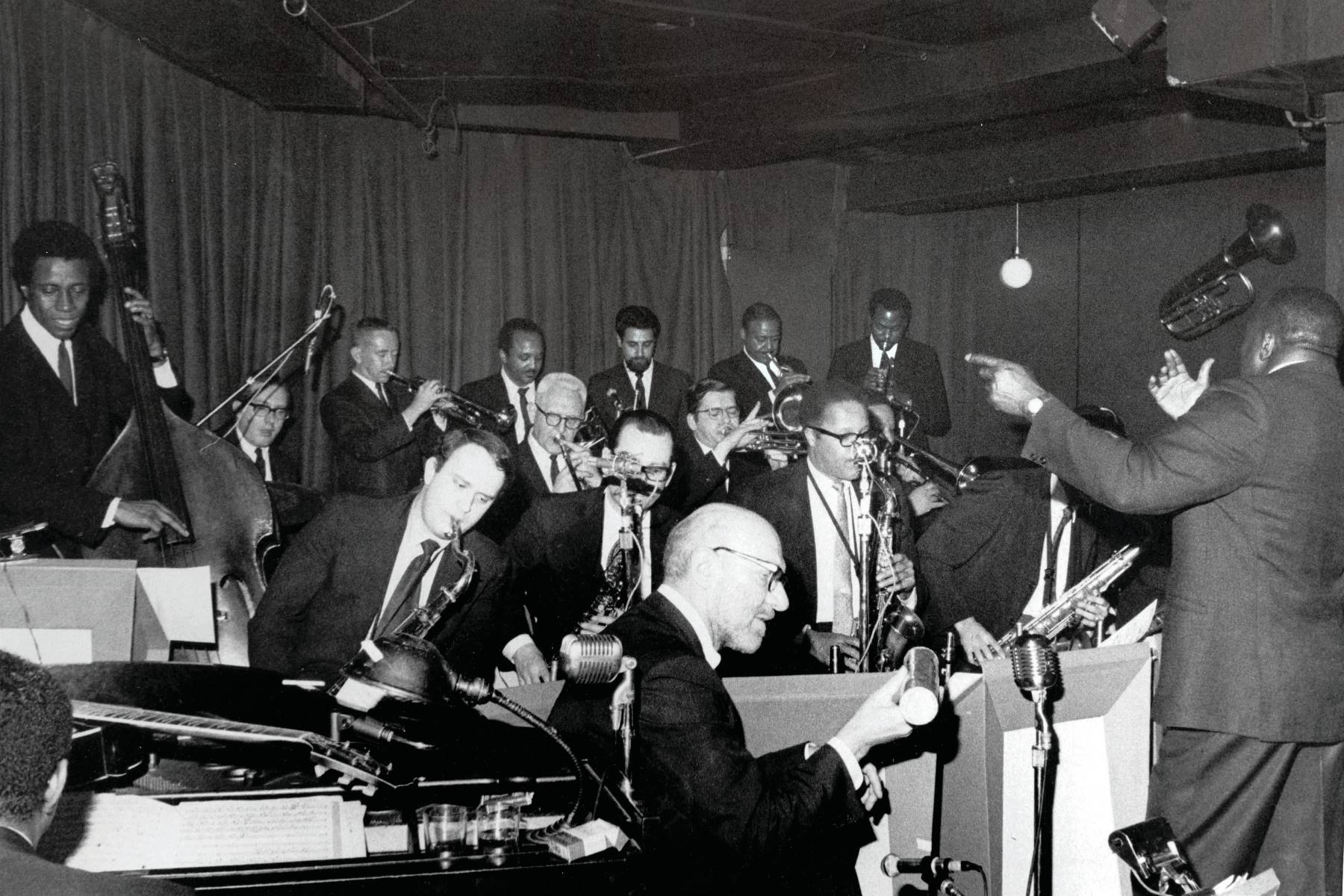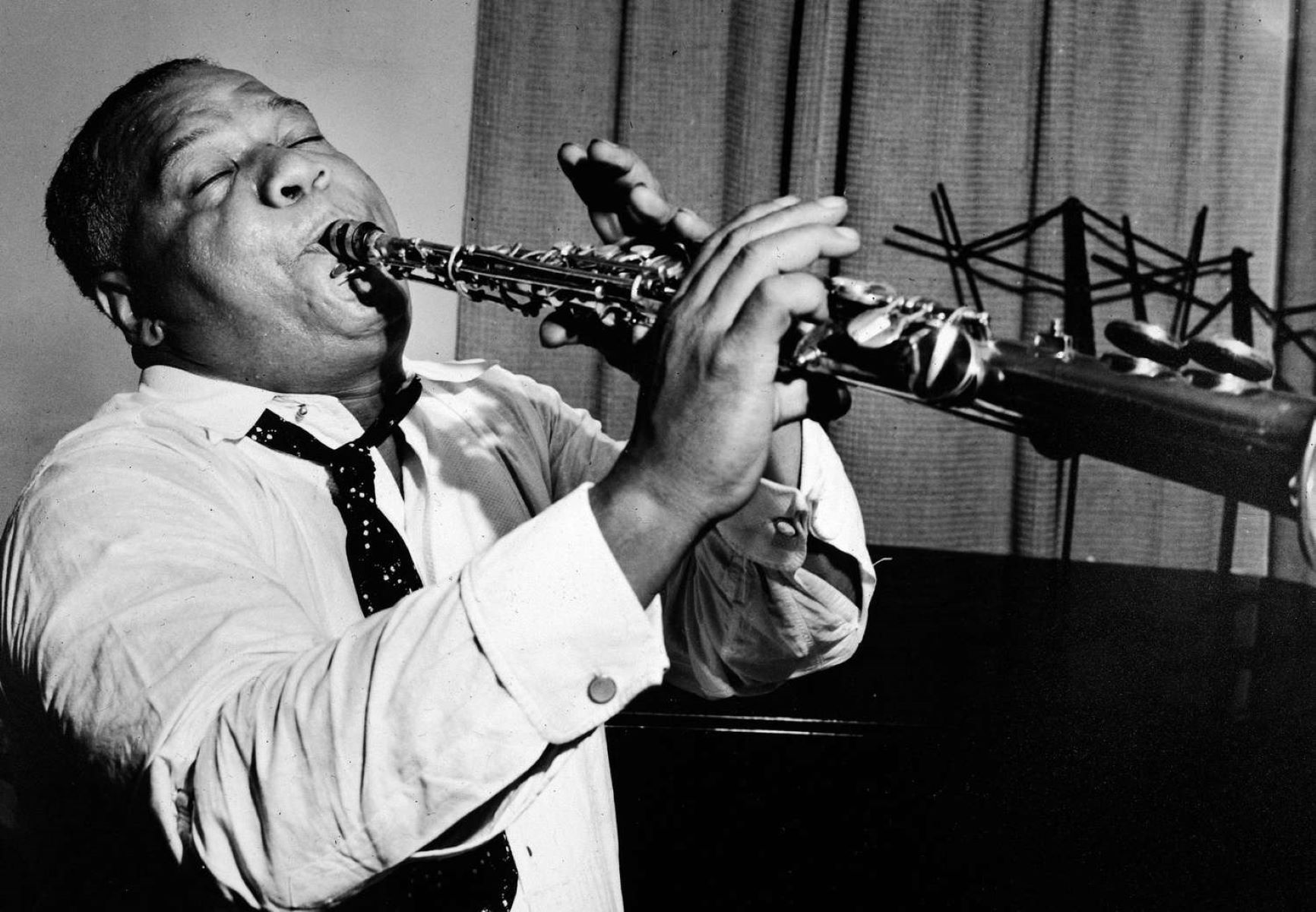

Jazz
What Is Comping Jazz
Published: October 12, 2023
Discover the essence of jazz and its unique improvisational style through an exploration of comping techniques. Uncover the rhythmic and harmonic intricacies that define this vibrant genre.
(Many of the links in this article redirect to a specific reviewed product. Your purchase of these products through affiliate links helps to generate commission for AudioLover.com, at no extra cost. Learn more)
Table of Contents
Introduction
Welcome to the world of jazz, where the swing and improvisation come together to create a dynamic and captivating genre of music. Within the realm of jazz, there exists a technique known as “comping” that plays a crucial role in the overall sound and feel of the music. In this article, we will delve into the origins, definition, and techniques of comping in jazz.
Comping, short for “accompanying,” is the art of providing harmonic support and rhythmic drive to a soloist or ensemble in jazz music. It is the backbone of the music, serving as the foundation on which the melodic improvisations of the soloists can soar. Without effective comping, jazz performances would lack depth, cohesion, and that infectious groove that makes the genre so unique.
Throughout the years, comping has evolved and taken on various forms, influenced by different styles and eras of jazz. From its humble beginnings in the early jazz and swing era to its sophisticated expressions in bebop, post-bop, and modern jazz, comping has become an integral part of the jazz vocabulary.
As we explore the world of comping, we will discover the techniques and approaches that accompanists utilize to create the desired musical environment for the soloists. From chord voicings to rhythmic patterns, interplay with the soloist, and adaptations to different jazz styles, comping is a skill that requires both technical proficiency and a deep understanding of the genre.
Whether you’re a jazz enthusiast, musician, or simply curious about the inner workings of this fascinating genre, this article will provide you with a comprehensive overview of the art of comping in jazz. Join us as we delve into the history, techniques, and examples of comping, and learn to appreciate the intricate and essential role it plays in the world of jazz.
Origins of Comping in Jazz
The origins of comping in jazz can be traced back to the early years of the genre’s development in the late 19th and early 20th centuries. During this time, jazz was heavily influenced by the rhythmic and harmonic elements of African and European musical traditions, as well as the cultural melting pot of New Orleans, where jazz was born.
In the early jazz ensembles, which typically consisted of a frontline of horns playing the melody and a rhythm section providing the harmonic and rhythmic support, comping emerged as a way to enhance and embellish the music. Pianists, guitarists, and other instruments in the rhythm section began experimenting with different chord voicings, rhythmic patterns, and embellishments to add color and depth to the ensemble.
One of the key figures in the development of comping was the legendary jazz pianist and bandleader Jelly Roll Morton. Morton, known for his inventive playing style, would often fill out the harmonies of the music by playing chords in his left hand while embellishing the melodies with his right hand. This technique, which became known as “stride piano,” laid the foundation for the modern approach to comping.
As jazz continued to evolve and move beyond the confines of New Orleans, comping became more sophisticated and integral to the music. With the rise of big bands in the swing era, the role of the rhythm section expanded, and comping became an essential part of the ensemble’s sound. Guitarists like Freddie Green and pianists like Count Basie developed comping styles that provided a strong rhythmic pulse while supporting the solos of the frontline musicians.
As bebop emerged in the 1940s, comping took on a new level of complexity. With the increased harmonic and rhythmic complexity of bebop compositions, accompanists were required to have a deep understanding of the intricacies of chords and scales. Pianists like Bud Powell and guitarists like Charlie Christian developed innovative comping approaches that pushed the boundaries of the genre.
From its humble beginnings in the early jazz era to its evolution in swing, bebop, and beyond, comping in jazz has become a rich and nuanced art form. Today, modern jazz musicians continue to explore and innovate in their comping techniques, pushing the boundaries while honoring the traditions of the genre.
Definition of Comping
In jazz music, comping refers to the act of providing harmonic and rhythmic support to a soloist or ensemble. It involves playing chords, rhythmic patterns, and embellishments to create a rich and cohesive musical backdrop for the improvisations of the soloists. Comping is a collaborative effort that requires active listening, communication, and a deep understanding of the harmonic structure and style of the music being played.
At its core, comping is about creating a musical conversation between the accompanist and the soloist. The accompanist’s role is to complement and enhance the soloist’s improvisations by providing a strong harmonic foundation and a supportive rhythmic groove.
Comping is not limited to any specific instrument, although it is most commonly associated with piano and guitar. However, it can be performed on any instrument capable of playing chords, such as vibraphone, organ, or even bass. Each instrument brings its own unique character and approach to comping, adding to the overall texture and sound of the ensemble.
While comping often involves playing traditional jazz chord progressions, accompanists have the freedom to interpret and embellish the chords in creative ways. This allows for the expression of individuality and personal style within the context of the music.
The art of comping requires a deep understanding of harmony, as accompanists must be able to select appropriate chord voicings that fit the style and mood of the piece. They also need to be aware of the soloist’s preferences and anticipate their improvisations, providing harmonic support that complements their ideas.
Rhythmically, comping can be as simple or complex as the music requires. Accompanists use a variety of rhythmic patterns, including strumming, arpeggios, or comping in a syncopated manner. The rhythm section, including the drums and bass, work together with the comping instrument to create a cohesive and swinging groove.
Overall, comping is an essential element of jazz music, providing the foundation and support on which the soloists can freely express themselves. It requires a high level of musicality, technique, and improvisational skills, as well as the ability to listen and respond in the moment. Comping is both an art form and a collaborative endeavor, contributing to the unique and ever-evolving sound of jazz.
Role of the Accompanist in Jazz
In the world of jazz, the accompanist plays a vital role in shaping the overall sound and feel of the music. The accompanist, often a pianist or guitarist, serves as the backbone of the ensemble, providing the harmonic and rhythmic foundation for the soloists to build upon. Their role is multi-faceted, requiring technical skill, musical sensitivity, and a deep understanding of both the music and the other musicians in the ensemble.
One of the primary responsibilities of the accompanist is to provide harmonic support. They create the chordal framework that underlies the music, choosing appropriate voicings and progressions that enhance the melodies and improvisations of the soloists. This requires an in-depth knowledge of jazz harmony, including chord substitutions and extensions, as well as an ability to adapt to different musical contexts and styles.
Furthermore, the accompanist must have a keen sense of rhythm, working closely with the drummer and bassist to establish a solid groove and sense of swing. They provide rhythmic accents and propulsion that drive the music forward, while also being responsive to the dynamics and phrasing of the soloists. Through their rhythmic choices and interactions with the rhythm section, the accompanist helps shape the overall feel and energy of the performance.
While providing harmonic and rhythmic support is key, the accompanist also plays an important role in ensemble communication and interaction. They actively listen to the soloists, responding and adapting to their ideas in real-time. This interplay between the soloist and accompanist often leads to musical dialogues and exchanges, enhancing the improvisational nature of jazz.
In addition to their role in supporting the soloists, the accompanist may also take on the role of a soloist themselves. They have the opportunity to showcase their own improvisational skills and musical ideas during solos or featured moments in the music. This versatility and ability to seamlessly transition between supporting and soloing is a hallmark of a skilled accompanist.
A successful accompanist possesses not only technical prowess and strong musicality but also a deep understanding of the ensemble’s dynamics and the ability to adapt to different musical contexts. They have a keen ear for listening to the nuances of the other musicians, anticipating their musical choices, and seamlessly fitting into the musical puzzle.
The role of the accompanist in jazz is a versatile and demanding one, requiring a combination of technical skill, musical sensitivity, and a deep understanding of the genre. They are the unsung heroes of the ensemble, providing the foundation and support that allows the soloists to shine and the music to come alive.
Techniques and Approaches to Comping
Comping in jazz is a versatile and creative art form that encompasses a wide range of techniques and approaches. Accompanists employ various methods to enhance the music and support the soloists. Here are some common techniques and approaches used in comping:
- Chord Voicings: Accompanists carefully choose chord voicings that provide the desired color and harmony to the music. They may use different inversions, extensions, and substitutions to create rich and interesting chord progressions.
- Rhythmic Patterns: Comping involves rhythmic creativity to establish and maintain a steady groove. Accompanists employ various patterns and rhythmic motifs, including strumming, arpeggios, rhythmic fills, and syncopation.
- Interplay with Soloists: Comping is a collaborative effort between the accompanist and the soloist. Accompanists listen attentively to the soloist’s improvisations and respond with complementary chords, rhythmic figures, and accentuations to create a musical dialogue.
- Dynamic Control: Accompanists understand the importance of dynamics in creating expressive and engaging music. They adjust the volume and intensity of their comping to match the energy of the soloist and the overall musical context.
- Listening and Anticipation: Skilled accompanists have a keen ear for anticipating the harmonic and rhythmic choices of the soloist. They actively listen and adapt their comping in real-time, providing seamless support and enhancing the spontaneity of the performance.
- Motivic Development: Accompanists can develop and embellish melodic motifs presented by the soloist. By repeating and transforming these motifs within their comping, they create cohesion and unity within the music.
Furthermore, the approach to comping can vary depending on the style and era of jazz being played. For example, in swing and traditional jazz, the accompanist may focus on playing a steady rhythm and providing a supportive harmonic foundation. In contrast, bebop and modern jazz may require more intricate and harmonically adventurous comping techniques.
It is important to note that while there are common techniques and approaches in comping, each accompanist brings their own unique style and interpretation to the music. This individuality and personal expression contribute to the diversity and richness of jazz music.
Ultimately, the techniques and approaches to comping in jazz are an ever-evolving and creative pursuit. Accompanists continuously explore new ideas, experiment with different chord voicings and rhythmic patterns, and push the boundaries of their musical expression. Through their artistry and skill, they contribute to the vibrant and dynamic nature of jazz.
Chord Voicings and Variations
Chord voicings are a fundamental aspect of comping in jazz. They refer to the different ways in which the notes of a chord can be arranged and spread across the instrument’s range. Accompanists carefully select chord voicings to create a specific harmonic color, enhance the melodic line, and interact with the soloist. Here are some common chord voicings and variations used in jazz comping:
- Root Position: The most basic form of a chord voicing, root position places the root note of the chord as the lowest pitch. For example, in a C major chord (C-E-G), the C note would be played as the lowest note, creating a stable and solid foundation.
- Drop 2 Voicings: Drop 2 voicings are a popular choice in jazz comping. They involve taking the second highest note of a four-note chord and dropping it down by one octave. This creates a more open and spread-out sound, allowing for greater clarity and range for the soloist.
- Shell Voicings: Shell voicings are minimalist chord voicings that typically consist of the root, third, and seventh of a chord. These voicings are versatile and work well in both solo and ensemble settings. Accompanists often embellish shell voicings with additional notes or rhythmic patterns.
- Rootless Voicings: Rootless voicings are widely used in comping to provide more harmonic freedom and avoid duplication of the bass player’s role. They omit the root note and incorporate other chord tones, such as the third, seventh, and extensions. Rootless voicings create a more sophisticated and modern harmonic sound.
- Upper Structures: Upper structure voicings involve adding tension and color to a chord by incorporating extensions and alterations. For example, using a C major triad in the left hand while playing a D♭ major triad in the right hand over it creates a C^7♭9 sound. Upper structure voicings add depth and complexity to the harmony.
In addition to these voicings, accompanists also experiment with various chord variations, inversions, and substitutions to create unique and interesting harmonic textures. They may incorporate altered chords, suspended chords, and chord substitutions to add tension, resolution, and harmonic movement to the music.
As accompanists navigate through different tunes and styles of jazz, they adapt their chord voicings and variations to suit the musical context. They consider factors such as the melody, bass movement, and the desired harmonic tension and release. This flexibility and creativity in chord voicings contribute to the overall richness and depth of the music.
Ultimately, chord voicings and variations are powerful tools in jazz comping, allowing accompanists to shape the harmonic landscape and create a compelling and harmonically rich accompaniment for the soloist. Through their choices and creativity, they contribute to the unique atmosphere and character of the jazz performance.
Rhythmic Patterns and Syncopation
In jazz comping, rhythm plays a crucial role in establishing a sense of groove and providing an engaging accompaniment for the soloist. Accompanists employ various rhythmic patterns and syncopation techniques to create a vibrant and dynamic rhythmic backdrop. These rhythmic elements contribute to the overall energy and drive of the music. Here are some common rhythmic patterns and syncopation techniques used in jazz comping:
- Walking Bass Lines: Accompanists often incorporate walking bass lines in their comping, where the lowest notes of the chords create a melodic line that moves in a smooth and continuous manner. This technique provides forward momentum and a strong sense of swing.
- Strumming: Strumming is a common approach in comping for guitarists. They use their fingers or a pick to rhythmically strum the chords, creating a percussive and rhythmic accompaniment. The strumming patterns can vary in complexity and intensity, depending on the style and mood of the music.
- Rhythmic Fills and Embellishments: Accompanists often add rhythmic fills and embellishments between chord changes or as interjections during the soloist’s phrases. These short melodic fragments and rhythmic figures provide excitement and variation within the comping.
- Syncopation: Syncopation is an essential element of jazz rhythm. Accompanists use syncopated rhythms by emphasizing off-beats and creating rhythmic tension against the underlying pulse. This adds a sense of excitement and complexity to the music, driving the energy forward.
- Counterpoint: Accompanists sometimes incorporate counterpoint techniques in their comping, creating multiple melodic lines that interweave and interact with each other. This adds layers of complexity and interest to the rhythm, further enhancing the musical dialogue between the soloist and accompanist.
- Polyrhythms: Polyrhythms are rhythmic patterns that involve multiple rhythms occurring simultaneously. Accompanists may use polyrhythms to create intricate and complex textures, adding a sense of sophistication and depth to the comping.
Rhythmic patterns and syncopation techniques allow accompanists to contribute to the swinging feel and infectious groove that is characteristic of jazz. By incorporating these elements into their comping, they create a rhythmic foundation that synergizes with the soloist and the rhythm section.
Accompanists must also be attentive to the overall dynamics of the music and the soloist’s phrasing. They engage in a musical conversation, responding to the soloist’s improvisations and providing rhythmic support that enhances the creative expression.
Through their rhythmic choices and techniques, accompanists add excitement, drive, and artistic flair to the music. Their rhythmic patterns and syncopation breathe life into the comping, creating a vibrant backdrop that propels the music forward and sets the stage for memorable jazz performances.
Interactions with Soloists
One of the most important aspects of comping in jazz is the interaction between the accompanist and the soloist. Accompanists have the unique opportunity to support and elevate the improvisations of the soloist through their comping. This interaction is a dynamic and ever-changing exchange of musical ideas, requiring active listening and responsiveness. Here are some key points regarding the interactions between accompanists and soloists in jazz:
Listening and Supporting: Accompanists listen attentively to the soloist’s improvisations, observing their melodic choices, phrasing, and overall musical direction. They provide harmonic support by choosing appropriate chord voicings and rhythmically complementing the soloist’s lines.
Reacting and Anticipating: Accompanists react in real-time to the soloist’s improvisations, adjusting their comping to fit the evolving musical context. They anticipate the soloist’s melodic ideas, harmonizing them with timely and complementary chord choices.
Musical Dialogue: The interaction between the accompanist and the soloist often takes the form of a musical dialogue. Accompanists offer musical responses to the soloist’s phrases, creating a back-and-forth conversation that enhances the improvisational flow.
Trading Solos: In certain sections of a jazz performance, the accompanist may take on a solo role while the soloist temporarily fills the comping role. This “trading fours” or other soloist-accompanist exchanges provide a dynamic and interactive element to the music.
Dynamic Control: Accompanists adjust the volume, intensity, and dynamics of their comping to match the soloist’s level of expression. They support the soloist during soft passages and propel the music during energetic moments, maintaining a cohesive and balanced sound.
Embracing Risk and Surprises: Accompanists are open to unexpected musical choices and surprises from the soloist. They adapt and embrace these moments of musical spontaneity, incorporating them into their comping and elevating the overall performance.
Creating Space: Accompanists understand the importance of leaving space and allowing the soloist to shine. They provide rhythmic and harmonic support while also knowing when to step back and give the soloist room to explore and express their musical ideas.
The interactions between accompanists and soloists in jazz are fluid and organic, guided by mutual respect, musical intuition, and a shared language. This musical dialogue adds depth, excitement, and a sense of collaboration to the performance, enabling the soloist to fully express their improvisational voice.
Through active listening, responsiveness, and a deep understanding of the language and style of jazz, accompanists contribute to the artistic exploration and the collective creativity of the ensemble. Their interactions with the soloist create a dynamic and engaging musical experience that is at the heart of jazz performance.
Examples of Comping in Jazz Recordings
Listening to jazz recordings is an excellent way to understand and appreciate the art of comping in action. Here are a few notable examples of comping in jazz recordings that showcase the various techniques and approaches discussed earlier:
1. “So What” – Miles Davis
In this iconic recording from the album “Kind of Blue,” pianist Bill Evans demonstrates his comping skills. His use of rootless voicings and sparse, delicate chordal support provides the perfect backdrop for Miles Davis’ melodic improvisations. The spaciousness of Evans’ comping allows the soloists to freely explore and interact with the rhythm section.
2. “Freddie Freeloader” – Wynton Kelly
On this track also from “Kind of Blue,” pianist Wynton Kelly showcases his rhythmic and interactive comping. His rhythmic fills and tasteful chord choices perfectly complement the solos of Miles Davis and John Coltrane. Kelly’s comping adds a vibrant energy to the performance, driving and propelling the music forward.
3. “All Blues” – McCoy Tyner
From the album “In a Silent Way,” pianist McCoy Tyner displays his mastery of comping. Tyner’s use of dense chord voicings, powerful rhythmic patterns, and his exceptional ability to create tension and release help to create a hypnotic and mesmerizing atmosphere throughout the piece. His comping interacts seamlessly with the melodic and atmospheric improvisations of the ensemble.
4. “My Favorite Things” – Kenny Barron
Pianist Kenny Barron’s rendition of “My Favorite Things” showcases his skillful and nuanced comping. His use of chord variations and delicate rhythmic patterns adds a touch of sophistication to the performance. Barron’s comping serves as the steady pulse behind the solos, providing a solid foundation while allowing the musicians to explore and push their boundaries.
5. “Green Dolphin Street” – Joe Pass
Guitarist Joe Pass demonstrates his mastery of comping in this recording. Pass expertly uses chord voicings, rhythmic variations, and melodic embellishments to create a rich and interactive accompaniment for the soloist. His comping is supportive, engaging, and demonstrates the importance of coherence and musical communication in a jazz performance.
These examples not only showcase the incredible skill and creativity of the accompanists but also highlight the versatility and adaptability of comping within the jazz genre. They serve as a reminder of the importance of comping in creating a cohesive and captivating musical experience.
By listening to and analyzing these recordings, aspiring accompanists and jazz enthusiasts can gain deeper insight into the techniques, interactions, and nuances of comping in jazz. It is through studying these examples that one can truly appreciate the artistry and significance of this essential component of jazz music.
Comping in Different Styles of Jazz
Jazz is a genre that has evolved over time, giving rise to various styles and subgenres. Each style of jazz presents unique characteristics and demands specific approaches to comping. Here, we explore how comping varies across different styles of jazz:
1. Swing: Swing is characterized by a steady, propulsive rhythm and a focus on melody. In swing comping, the accompanist’s role is to provide a solid rhythmic foundation while supporting the soloist. Chord voicings emphasize the traditional harmonic progressions of the style, often using walking bass lines, stride piano techniques, and rhythmic comping patterns that enhance the swinging feel.
2. Bebop: Bebop is known for its fast tempos, complex harmonies, and intricate melodic lines. In bebop comping, the accompanist must navigate through rapid chord changes and extended harmonies. Rootless voicings, upper structures, and chromatic embellishments are commonly used to support the soloist’s fast and agile improvisations. Bebop comping requires a high level of skill, harmonic knowledge, and the ability to react quickly to the soloist’s melodic ideas.
3. Modal Jazz: Modal jazz emphasizes long, static chords and modes rather than traditional chord progressions. Modal comping focuses on creating spacious and atmospheric accompaniment that highlights the unique tonality of each mode. Accompanists often employ open voicings, suspended chords, and more ambiguous harmonic choices. Modal comping allows for more freedom and exploration by both the soloist and the accompanist.
4. Fusion: Fusion combines elements of jazz with other genres, such as rock, funk, and electronic music. In fusion comping, the accompanist may incorporate rhythmic patterns and chord voicings inspired by these genres. The focus is on creating a tight and energetic rhythmic foundation that complements the fusion sound, often involving complex syncopation, funk-infused grooves, and the use of electric instruments.
5. Latin Jazz: Latin jazz blends jazz with Afro-Cuban, Brazilian, and other Latin rhythms and styles. In Latin jazz comping, the accompanist incorporates distinctive Latin rhythmic patterns, such as clave, montuno, or bossa nova rhythms, into their chords and rhythmic choices. The comping style in Latin jazz is highly syncopated, vibrant, and emphasizes the rich and infectious grooves of the Latin rhythms.
In summary, comping in jazz varies across different styles, each requiring its own set of techniques and approaches. The accompanist’s role is to adapt to the specific characteristics of the style, enhancing the rhythmic feel, harmonic structure, and melodic flow of the music. Through understanding and mastery of the stylistic nuances, accompanists contribute to the authenticity and successful execution of jazz performances across a range of styles.
Conclusion
Comping is a vital and dynamic component of jazz music. It serves as the foundation upon which the soloist can freely express themselves, and it adds depth, harmony, and rhythmic drive to the music. Throughout its history, comping has evolved, developed, and encountered various styles and techniques.
From the early jazz era to modern jazz styles, comping has taken on different forms, while still maintaining its essential role in providing support and enhancing the improvisational journey of the soloist. Accompanists utilize a wide array of techniques and approaches, including chord voicings, rhythmic patterns, and syncopation, to create a compelling musical backdrop.
The accompanist’s interactions with the soloist are at the heart of comping. Active listening, responsiveness, and musical dialogue allow accompanists to provide seamless support, anticipate the soloist’s improvisations, and engage in meaningful exchanges. It is through this collaboration that the magic of jazz is truly brought to life.
Aspiring accompanists and jazz enthusiasts can learn from studying examples of masterful comping in jazz recordings. By listening closely and analyzing the choices and techniques of accomplished accompanists, one can develop a deeper understanding and appreciation for the artistry of comping.
It is important to note that comping is not a one-size-fits-all approach. Different styles of jazz require different techniques, voicings, and rhythmic patterns. Swing, bebop, modal, fusion, and Latin jazz each present unique challenges and opportunities for accompanists, highlighting the versatility and adaptability of comping in jazz music.
In conclusion, comping is an indispensable element that showcases the collaborative nature and improvisatory spirit of jazz. Whether it’s providing harmonic support, creating rhythmic interest, or engaging in musical dialogue with the soloist, comping is essential in bringing a jazz performance to life. With its rich history, innovative techniques, and ever-evolving nature, comping continues to captivate audiences and push the boundaries of jazz music.











